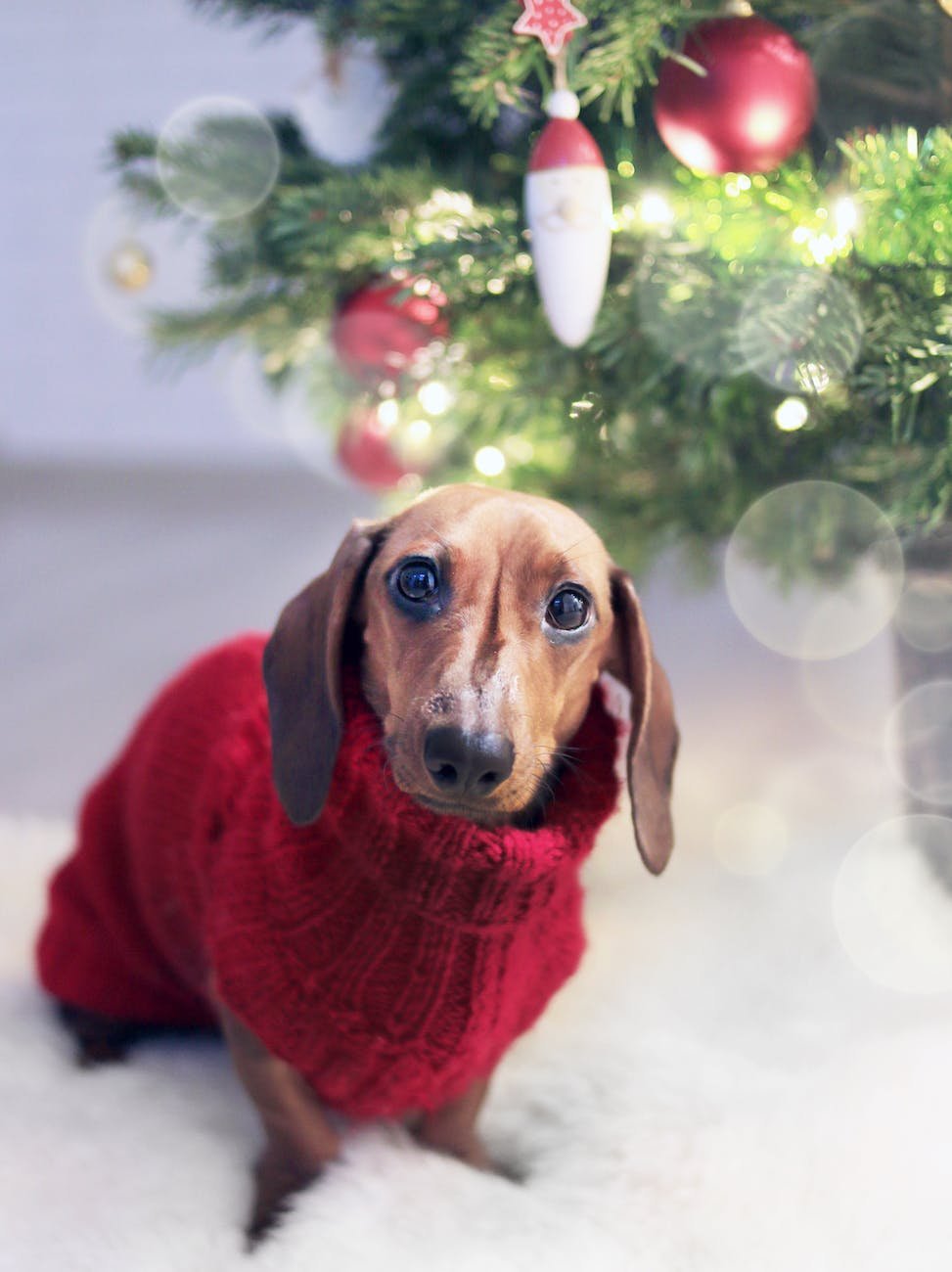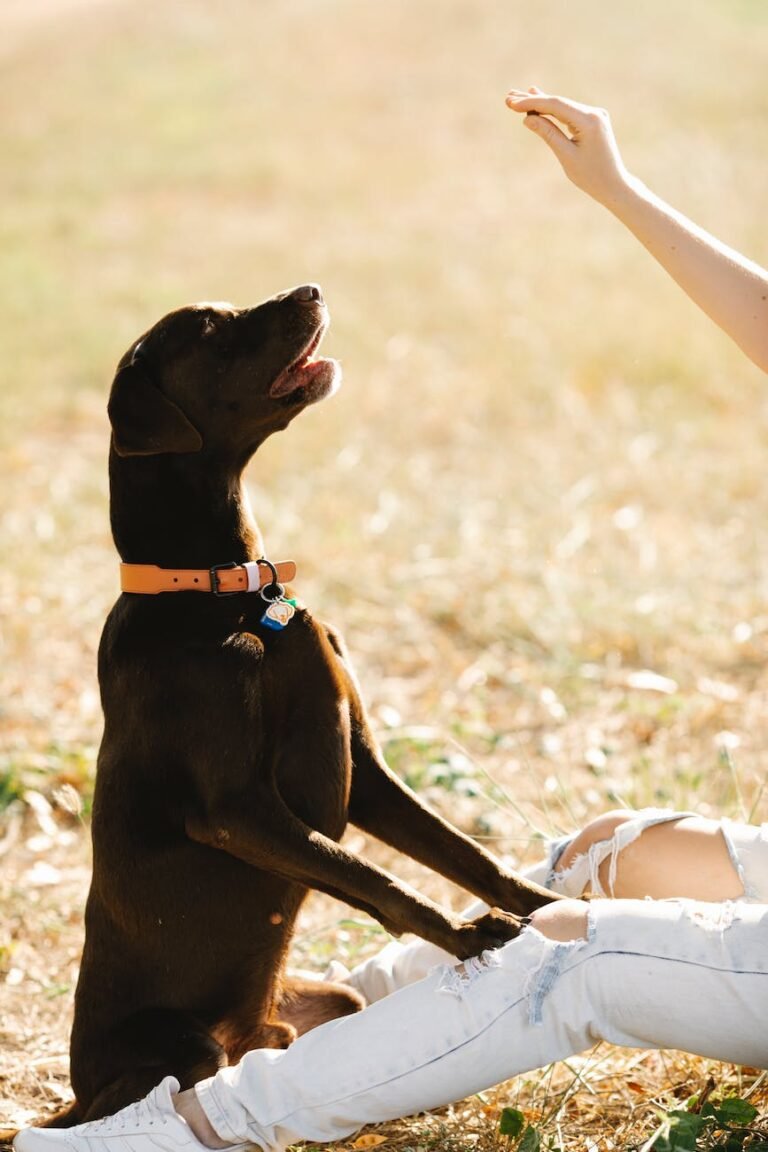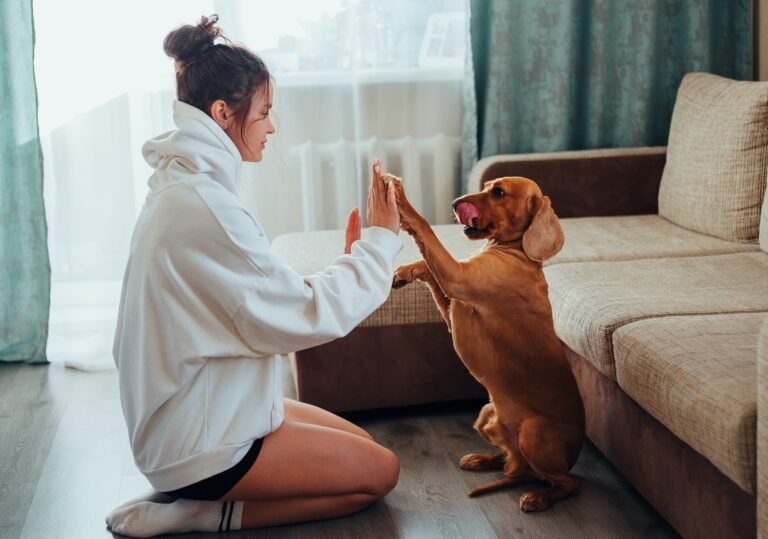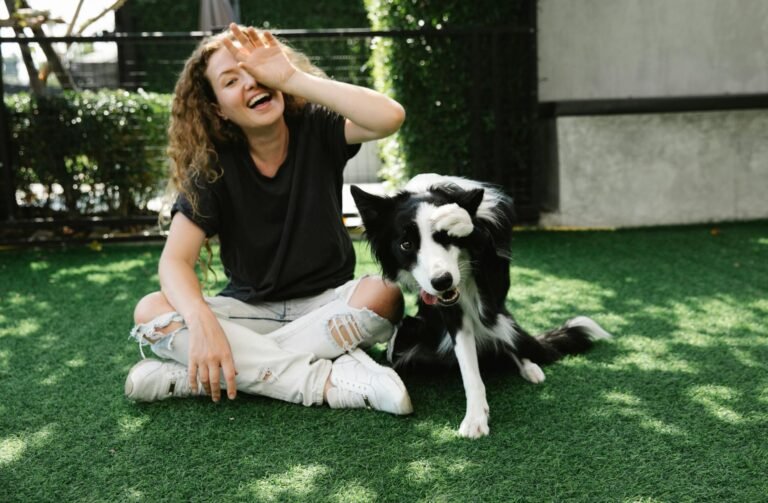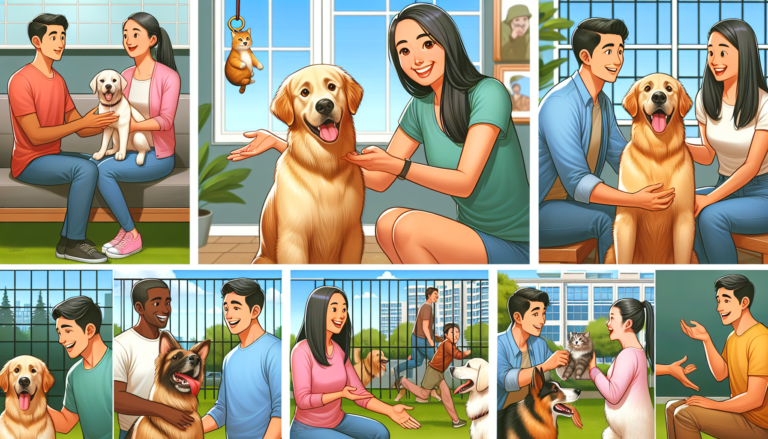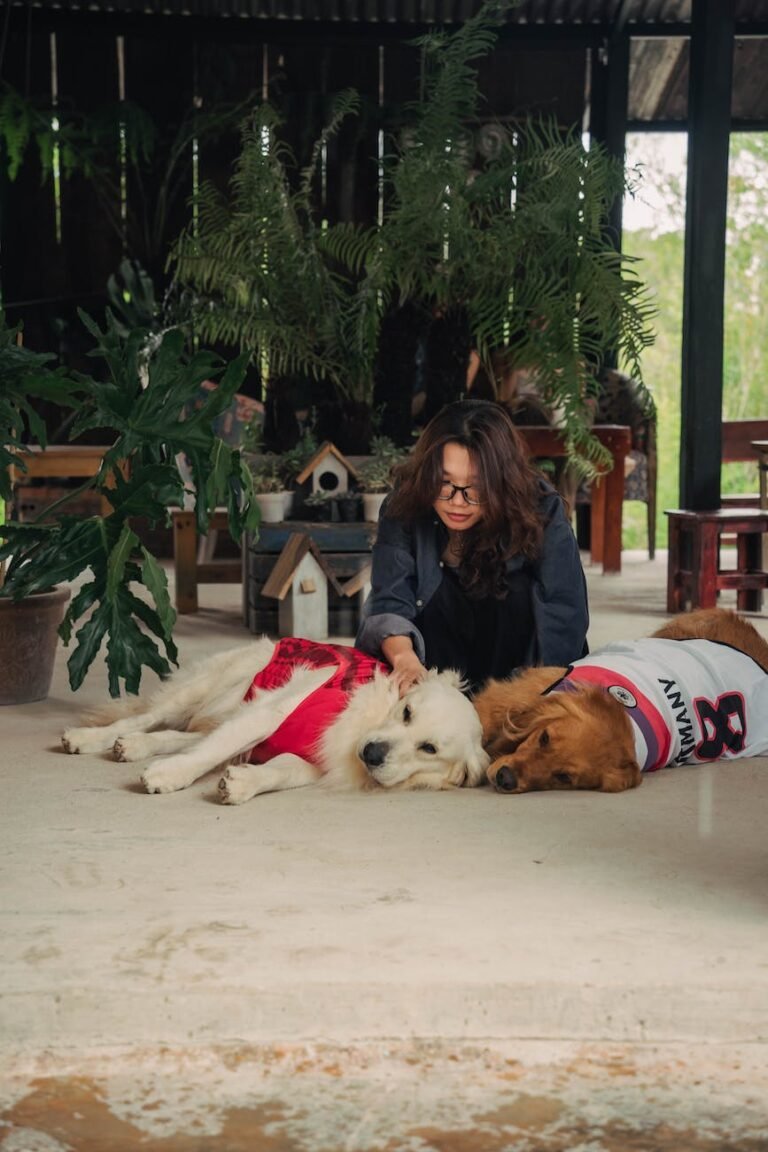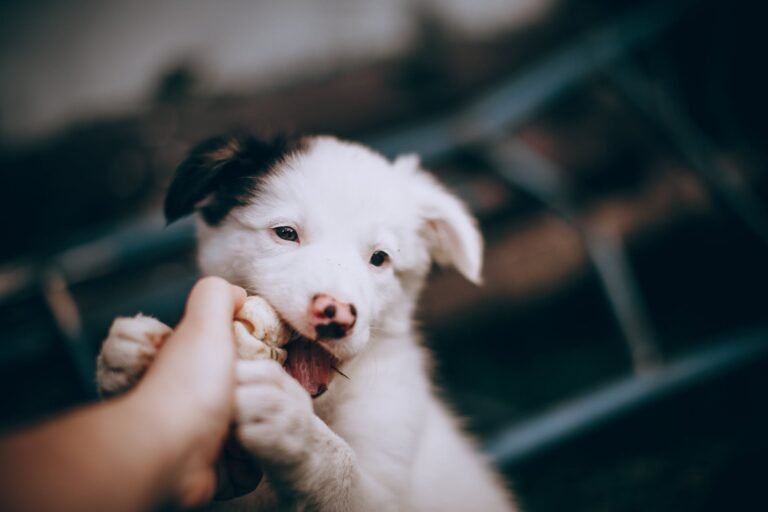Puppy Paradise: Transform Your Home into a Puppy-Proof Haven
Preparing Your Home for a New Puppy
Before welcoming a new puppy into your home, it’s essential to puppy-proof your living space. Puppy-proofing ensures that your furry friend stays safe and protected while exploring their new environment. In this section, we will discuss why puppy-proofing is important and how to assess potential hazards in your home.
Why Puppy-Proofing is Important
Puppy-proofing your home is important for several reasons. First and foremost, it helps prevent accidents and injuries to your new furry family member. Puppies are naturally curious and love to explore their surroundings. By removing potential hazards, you can minimize the risk of your puppy ingesting harmful substances, getting injured, or damaging valuable items.
Puppy-proofing also helps create a stress-free environment for both you and your puppy. By eliminating potential dangers, you can enjoy peace of mind knowing that your puppy is safe and secure. Additionally, a well-prepared home allows you to focus on bonding with your new companion and establishing a positive and trusting relationship.
Assessing Potential Hazards in Your Home
Assessing potential hazards in your home is an important step in puppy-proofing. Start by getting down to your puppy’s eye level and exploring your living space from their perspective. Look for any objects, substances, or areas that could pose a threat to your puppy’s safety. Here are some areas to pay special attention to:
| Hazard | Potential Risks |
|---|---|
| Houseplants and Flowers | Some plants are toxic to dogs and can cause digestive issues or poisoning if ingested. Ensure that any plants within your puppy’s reach are non-toxic. For a comprehensive list of pet-safe plants, refer to our article on pet-friendly houseplants. |
| Trash and Recycling Bins | Dispose of trash and recycling in secure containers to prevent your puppy from rummaging through potentially harmful items, such as sharp objects, spoiled food, or toxic substances. |
| Choking Hazards | Small objects, such as coins, buttons, or children’s toys, can pose a choking hazard to puppies. Keep these items out of your puppy’s reach or consider using baby gates or barriers to restrict access to certain areas. |
| Electrical Cords | Puppies may chew on electrical cords, risking electric shock or injury. Secure loose cords and use cord protectors or covers to prevent your puppy from accessing them. |
| Cleaning Products | Store cleaning products, chemicals, and other hazardous substances in locked cabinets or high shelves to prevent accidental ingestion or exposure. Check out our article on puppy-proofing your home for additional tips. |
By assessing potential hazards and taking appropriate measures to address them, you can create a safe and secure environment for your new puppy. Remember, supervision is key, especially during the initial stages of acclimating your puppy to their new home. With a well-prepared and puppy-proofed space, you can ensure a smooth transition and set the stage for a happy and healthy life together.
Securing Your Space
When welcoming a new puppy into your home, it’s essential to create a safe and secure environment for them to explore. Puppy-proofing your space is crucial to prevent accidents and keep your furry friend out of harm’s way. In this section, we’ll discuss three key aspects of securing your space for your new puppy: creating a safe zone, using gates and barriers, and securing cords and wires.
Creating a Safe Zone for Your Puppy
Designating a safe zone for your puppy is an effective way to limit their access to certain areas of your home. This safe zone can be a specific room or an enclosed space, such as a puppy playpen or a crate. Ensure that this area is free from potential hazards, such as toxic plants, electrical cords, or sharp objects. By providing a safe space for your puppy to play and relax, you can have peace of mind knowing they are protected.
Consider crate training your puppy as part of creating a safe zone. A crate provides a secure and cozy den-like space where your puppy can rest and sleep. It also aids in crate training a puppy and helps with housebreaking. Make sure the crate is appropriately sized for your puppy, allowing them to stand, turn around, and lie down comfortably.
Using Gates and Barriers
Using gates and barriers is an effective way to restrict your puppy’s access to certain areas of your home. Install sturdy baby gates to block off rooms or areas that are off-limits to your furry friend. This can include rooms with valuable items, rooms with potentially harmful substances, or areas with delicate furniture.
When selecting gates or barriers, ensure that they are securely installed and tall enough to prevent your puppy from jumping over them. It’s also essential to choose gates that are designed specifically for pets, as they are built to withstand the curiosity and energy of your puppy.
Securing Cords and Wires
Puppies are naturally curious and love to explore their surroundings by chewing on objects, including cords and wires. To prevent accidents and potential electrical hazards, it’s crucial to secure cords and wires out of your puppy’s reach. Here are a few tips for managing cords and wires:
- Use cord covers or cord concealers to keep cords organized and out of sight.
- Tuck cords behind furniture whenever possible to prevent your puppy from accessing them.
- Use cord clips or tape to secure cords to the wall or baseboards, keeping them off the floor.
- Consider using cord protectors or bitter-tasting sprays to deter your puppy from chewing on cords.
By taking these precautions, you can minimize the risk of your puppy chewing on cords and potentially injuring themselves or causing damage to your home.
Creating a safe zone, using gates and barriers, and securing cords and wires are essential steps in puppy-proofing your home. By implementing these measures, you can provide a safe and secure environment for your new furry family member. For more tips on puppy training and care, check out our article on puppy training tips and our puppy feeding guide.
Protecting Your Belongings
When bringing a new puppy into your home, it’s important to take steps to protect your belongings from potential damage. Puppies are naturally curious and may explore their surroundings by chewing, scratching, or knocking things over. To ensure a safe and harmonious environment for both you and your furry friend, here are some tips for protecting your belongings.
Storing Hazardous Substances
Puppies are prone to investigating and tasting anything within their reach. It’s crucial to store hazardous substances securely to prevent accidental ingestion and potential harm to your puppy. Keep cleaning supplies, chemicals, medications, and plants that may be toxic out of your puppy’s reach. If necessary, consider using childproof locks on cabinets or storing these items in higher locations.
Managing Small Objects
Puppies tend to be attracted to small objects, which can pose a choking hazard if swallowed. Keep items such as coins, jewelry, buttons, and small toys off the floor and inaccessible to your curious puppy. Always be vigilant and promptly pick up any small objects that may have fallen or been left within their reach.
Safeguarding Fragile Items
Delicate and fragile items are at risk when you have a playful and energetic puppy. Take precautions to protect fragile objects such as vases, china, and decorations. Consider moving these items to higher surfaces or display them in areas that are out of your puppy’s reach. If necessary, use baby gates or barriers to restrict access to certain rooms or areas where fragile items are kept.
To summarize the tips mentioned above:
| Protecting Your Belongings |
|---|
| Store hazardous substances securely |
| Manage small objects to prevent choking hazards |
| Safeguard fragile items by moving them out of reach |
By implementing these measures, you can create a safe environment for both your puppy and your belongings. Remember, supervision is key during the early stages of puppyhood. For more information on training and caring for your new furry family member, take a look at our articles on crate training a puppy, puppy training tips, and puppy feeding guide. And if you’re preparing to bring home a new puppy, don’t miss our article on bringing home a new puppy for helpful tips and advice.
Eliminating Potential Dangers
When bringing a new puppy into your home, it’s crucial to eliminate any potential dangers to ensure their safety. Puppy-proofing your home is an essential step in creating a secure environment for your furry friend. In this section, we will explore three key areas to focus on when eliminating potential dangers: managing houseplants and flowers, securing trash and recycling bins, and identifying and addressing potential choking hazards.
Managing Houseplants and Flowers
While houseplants and flowers can add beauty to your home, some can be toxic to puppies if ingested. It’s important to identify and place any potentially harmful plants out of your puppy’s reach. Here are some common plants that can be toxic to dogs:
| Plant | Potential Toxicity |
|---|---|
| Aloe Vera | Mild to Moderate |
| Azalea | Severe |
| Lily | Severe |
| Philodendron | Mild |
| Pothos | Mild |
Consider moving these plants to higher shelves or using hanging planters to keep them away from curious paws. If you’re unsure about the toxicity of a specific plant, consult with your veterinarian.
Securing Trash and Recycling Bins
Puppies have a knack for getting into places they shouldn’t, and trash and recycling bins can be a treasure trove of potential hazards. To prevent your puppy from accessing these bins, consider using bins with secure lids or placing them in cabinets with childproof locks. This will not only prevent them from ingesting harmful substances but also reduce the risk of them getting injured by sharp objects or consuming spoiled food.
Identifying and Addressing Potential Choking Hazards
Puppies are naturally curious and tend to explore their surroundings with their mouths. It’s important to identify and remove any small objects that could pose a choking hazard. Here are some common items to be cautious of:
- Small toys or toy parts
- Buttons
- Coins
- Jewelry
- Rubber bands
- Paperclips
Ensure that these items are stored in secure containers or placed in areas that are inaccessible to your puppy. Regularly inspect your home to identify any potential hazards and promptly remove them.
By taking these precautions and eliminating potential dangers, you can create a safe and puppy-friendly environment. Remember, supervision is key, especially during the early stages of your puppy’s exploration. For more tips on ensuring a safe and happy home for your new furry family member, check out our article on bringing home a new puppy.
Ensuring a Safe Environment
When bringing a new puppy into your home, it is essential to create a safe environment that minimizes any potential hazards. This section focuses on three key aspects of ensuring a safe environment for your furry friend: checking for escaping opportunities, covering openings and holes, and blocking access to dangerous areas.
Checking for Escaping Opportunities
Puppies are naturally curious and may attempt to explore areas that could pose a danger to their safety. It’s crucial to carefully inspect your home for any potential escaping opportunities. Look for gaps or openings in fences, gates, or doors that a small puppy could squeeze through. Ensure that all windows and doors are securely closed and that screens are intact to prevent any escape attempts.
Covering Openings and Holes
Puppies have a knack for finding small openings and holes that can lead to trouble. Cover any openings or gaps that your puppy could crawl into, such as spaces beneath furniture or gaps in walls. Use baby gates or barriers to block off areas where your puppy could get stuck or access hazardous areas.
Blocking Access to Dangerous Areas
Certain areas of your home may contain potential dangers for your puppy. Identify rooms or spaces that could be hazardous, such as the kitchen, laundry room, or areas with exposed electrical outlets. Use baby gates or barriers to restrict access to these areas and prevent accidents.
To ensure a safe environment for your puppy, it’s important to combine these measures with proper supervision and training. For more information on creating a safe haven for your puppy, check out our article on bringing home a new puppy.
Remember that while supervision is crucial, crate training can provide a safe space for your puppy when you’re unable to directly supervise them. Learn more about crate training in our article on crate training a puppy.
By checking for escaping opportunities, covering openings and holes, and blocking access to dangerous areas, you can create a secure environment where your puppy can thrive and grow. With a safe space to explore and play, you can have peace of mind knowing that your furry family member is protected from potential hazards.
Supervision and Training
When bringing a new puppy into your home, supervision and training play a crucial role in creating a safe environment for your furry friend. In this section, we will explore the importance of supervision, basic training techniques, and positive reinforcement methods to ensure a safe and happy home for your puppy.
The Importance of Supervision
Supervision is key to preventing accidents and creating a puppy-proof environment. Keeping a close eye on your puppy allows you to intervene quickly if they engage in potentially dangerous behaviors or come into contact with hazardous items. By being vigilant and proactive, you can redirect your puppy’s attention and guide them towards safe activities. It is especially important to closely supervise your puppy during the initial stages of adjustment to their new home. For more tips on bringing home a new puppy, check out our article on bringing home a new puppy.
Basic Training for a Safe Home
Basic training is essential for ensuring your puppy’s safety and well-being. Start by teaching your puppy simple commands such as “sit,” “stay,” and “come.” These commands will help you effectively manage your puppy’s behavior and keep them out of harm’s way. Additionally, crate training is a valuable tool for both housebreaking and creating a safe space for your puppy. For more information on crate training, visit our article on crate training a puppy.
Positive Reinforcement Techniques
Positive reinforcement is a highly effective training method that promotes good behavior and strengthens the bond between you and your puppy. Reward your puppy with treats, praise, and affection when they exhibit desirable behaviors such as using designated potty areas or chewing on appropriate toys. This positive feedback encourages your puppy to repeat these behaviors and helps them understand what is expected of them. It is important to note that punishment or harsh training methods should be avoided as they can lead to fear and anxiety in your puppy.
Consistency is key when implementing positive reinforcement techniques. Set clear rules and boundaries for your puppy and ensure that all family members follow them consistently. This helps your puppy understand what is allowed and reinforces positive behaviors. Additionally, provide plenty of mental and physical stimulation through playtime, interactive toys, and regular exercise to keep your puppy engaged and prevent boredom-related mischief.
By supervising your puppy, implementing basic training techniques, and utilizing positive reinforcement, you can create a safe and nurturing environment for your new furry family member. Remember to be patient and consistent as training takes time and effort. For more puppy training tips and guidance, check out our article on puppy training tips. And don’t forget to establish a proper puppy feeding schedule by referring to our puppy feeding guide.

